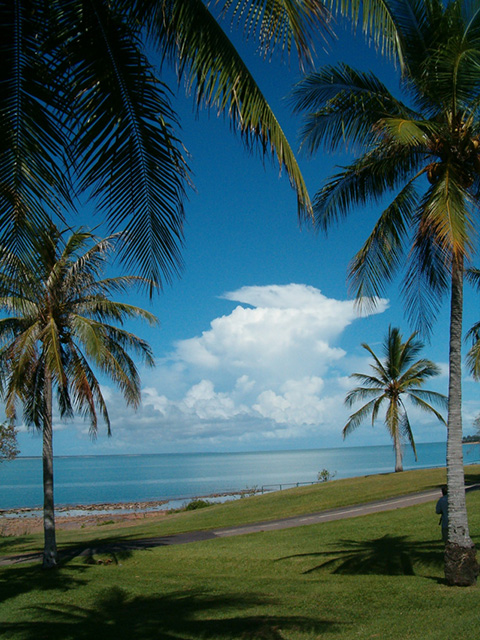Impact of Local Climate on Cloud Systems
Tropical atmospheric data used to test climate model accuracy.

The Science
The role of clouds in precipitation and Earth’s atmospheric radiation balance is a major area of uncertainty in global climate models. To better understand and model the development of tropical convective cloud systems, researchers took advantage of cloud observations in two tropical locations with very different climates: Darwin, Australia, a coastal site, and Niamey, Niger, an arid site near the Sahara Desert. Data from these sites were obtained during field campaigns conducted by the Department of Energy (DOE) Atmospheric Radiation Measurement (ARM) Climate Research Facility.
The Impact
High-resolution model simulations allowed scientists to quantitatively describe the transport of water between the convective, stratiform, and anvil regions of cloud systems and to quantify water sources and sinks from microphysical processes. This information can help determine parameters used for representing clouds in general circulation models
Summary
Researchers used observations made by radiosondes (data-recording balloons) from ARM and other international agencies to initialize high-resolution model simulations. They then compared the simulation results to radar and satellite observations to determine whether the model was accurately capturing cloud properties. The model was able to reproduce characteristics of the observed cloud systems, known as mesoscale convective systems, in both locations. The African cloud systems were larger, having a scale of nearly 400 km, while the Australian systems were approximately 100 km. Once satisfied with the quality of the model simulations, researchers performed sensitivity studies to understand which aspects of the environment led to differences in the cloud systems at the two locations. The model experiments found that the Australian cloud systems had stronger convective updrafts, and the African clouds had stronger mesoscale ascent outside the convective areas. Differences in vertical wind shear and the larger amounts of dust aerosol at Niamey also contributed to variation in the two regions’ cloud systems.
Contact
Xiping Zeng
C423, Bldg. 33, Mail Code 612, NASA Goddard Space Flight Center
Greenbelt, MD 20771
xiping.zeng@nasa.gov
Funding
This research was supported by an interagency agreement (DE-AI02-04ER63755) with the Office of Biological and Environmental Research (BER) within DOE’s Office of Science as part of BER’s Atmospheric System Research program. It was also supported by the NASA MAP project under grants NNX09AJ46G and NNX10AG18G.
Publications
Zeng, X., et al. “A comparison of the water budgets between clouds from AMMA and TWP-ICE.” J. Atmos. Sci. 70 (2), 487–503 (2013). [DOI: 10.1175/JAS-D-12-050.1]
Highlight Categories
Performer: University , SC User Facilities , BER User Facilities , ARM
Additional: Collaborations , Non-DOE Interagency Collaboration



